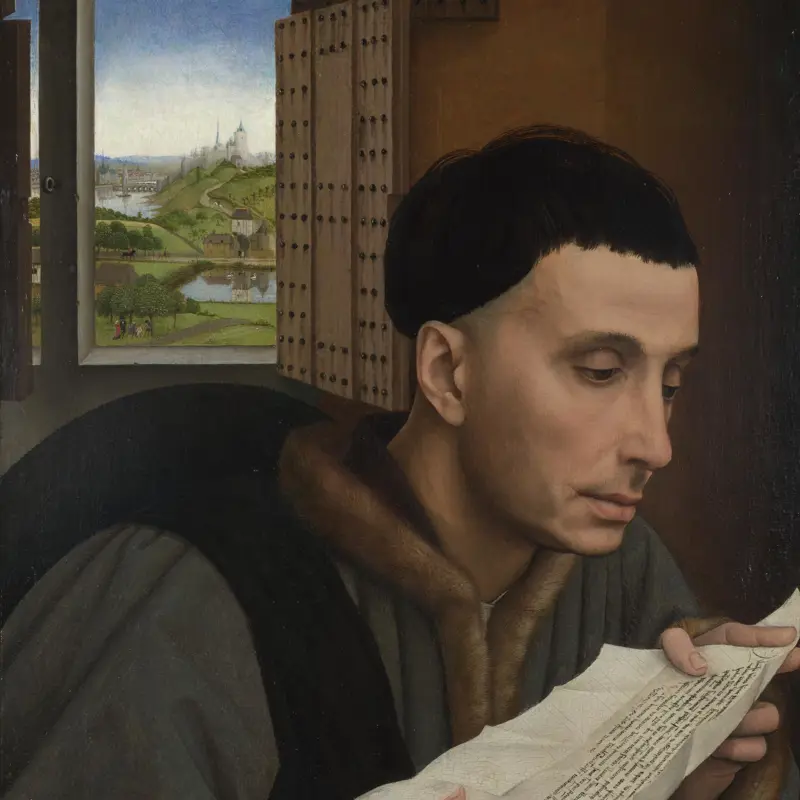Probably by the workshop of Rogier van der Weyden, 'Pietà', probably about 1465
About the work
Overview
According to the Meditations on the Life of Christ and other texts, the weeping Virgin Mary embraced Christ’s body when he was taken down from the Cross. This subject is usually referred to as the pietà.
On the left is Saint Jerome with the lion that was his companion. On the right, a saint wearing the black and white robes of the Dominican Order could be Dominic, but he has no identifying emblem. The donor wears a black garment trimmed with brown fur. The object behind his head is a purple hat, and he wear pattens (wooden overshoes). He is possibly Girolamo Vento, a Genoese merchant living in Bruges in 1469–70.
The figures of the Virgin and Christ are simplified adaptations from the centre panel of the Miraflores Triptych (Gemäldegalerie, Berlin) with other figures added around them. Similar groups occur in other paintings connected with Rogier: it seems that he made a simplified version of the Miraflores Pietà which could be repeated and varied by his assistants for different clients.
Key facts
Details
- Full title
- Pietà
- Artist
- Probably by the workshop of Rogier van der Weyden
- Artist dates
- About 1399 - 1464
- Date made
- Probably about 1465
- Medium and support
- Oil on wood (Balic/Polish oak, identified)
- Dimensions
- 35.5 × 45 cm
- Acquisition credit
- Acquired from the Earl of Powis under the terms of the Finance Act, 1956
- Inventory number
- NG6265
- Location
- Not on display
- Collection
- Main Collection
Provenance
Additional information
Text extracted from the ‘Provenance’ section of the catalogue entry in Lorne Campbell, ‘National Gallery Catalogues: The Fifteenth Century Netherlandish Schools’, London 1998; for further information, see the full catalogue entry.
Bibliography
-
1958The National Gallery, The National Gallery: July 1956 - June 1958, London 1958
-
1967M.J. Friedländer, Early Netherlandish Painting, eds N. Veronée-Verhaegen and H. Pauwels, trans. H. Norden, 14 vols, Leiden 1967
-
1970M. Davies, The National Gallery, London, Les Primitifs flamands. I, Corpus de la peinture des anciens Pay-Bas méridionaux au quinzième siècle 11, Brussels 1970
-
1987Davies, Martin, National Gallery Catalogues: The Early Netherlandish School, 3rd edn, London 1987
-
1998Campbell, Lorne, National Gallery Catalogues: The Fifteenth Century Netherlandish Paintings, London 1998
-
2001
C. Baker and T. Henry, The National Gallery: Complete Illustrated Catalogue, London 2001
About this record
If you know more about this work or have spotted an error, please contact us. Please note that exhibition histories are listed from 2009 onwards. Bibliographies may not be complete; more comprehensive information is available in the National Gallery Library.






